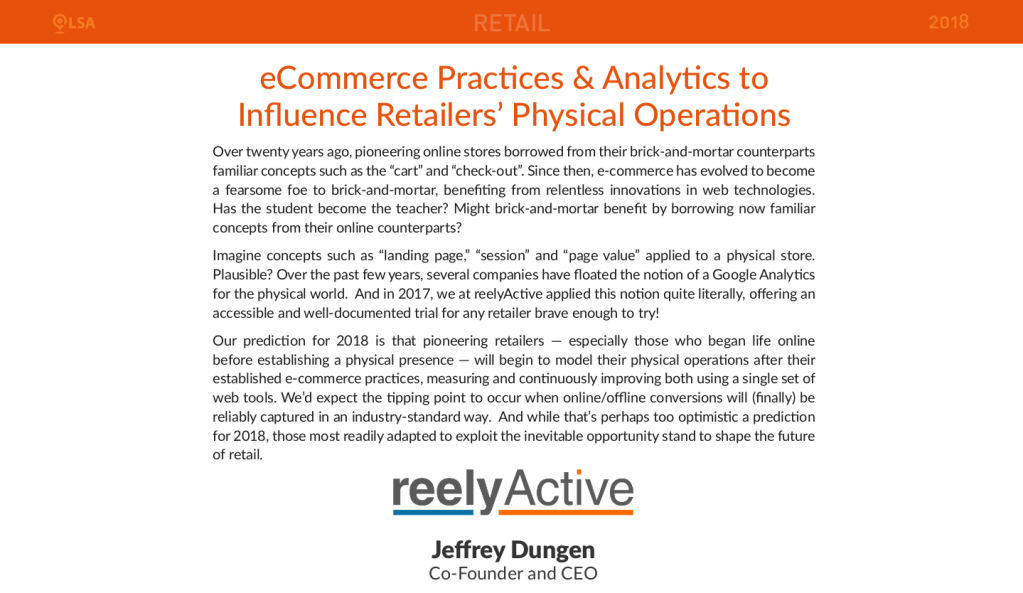The Local Search Association‘s tradition of publishing expert predictions for the New Year is something we look forward to at the start of the year, and we’re excited about what the experts have to say about real-time location in 2018.
Beginning with user data, Foursquare‘s Steven Rosenblatt predicts:
marketers will turn their focus towards data quality and hold their data partners and providers to higher standards and increased transparency to ensure fresh, first-party (opted-in) data that drives meaningful consumer engagement and better business results.
Our 2017 LSA prediction concerning opt-in turned out to be overly optimistic, and, as we argue in our previous blog post, the major platforms seem reticent to create real-world opt-in capabilities. However, we’ve long argued that individuals will gladly opt-in and share relevant data in exchange for something of real value to them, and would be very pleased to see a surge in such opt-in opportunities in 2018.
Of course, data quality isn’t only about the user: what about the location itself? Reveal Mobile‘s Brian Handly argues:
This doesn’t just mean accuracy of the location data, but also the accuracy of the points of interest that location data is matched against.
Indeed, we too think this will become a key focus in 2018, as we ourselves predicted (on page 64) that retailers will begin to model their physical operations after their established e-commerce practices, by associating each physical point of interest with its online equivalent: the corresponding product/category webpage. In other words, physical browsing behaviour will be measured and analysed exactly as online browsing behaviour, using the latter’s established set of tools.
And how will the distribution of such high-quality data take place in 2018? Thinknear‘s Brett Kohn argues:
The emergence of data marketplaces, improved transparency, and the desire of app publishers to monetize through data rather than ads is driving a wave of data streams into the market.
The emergence and acceptance of data marketplaces will be critical for the widespread adoption of real-time location capabilities. And standards for both first-party data and semantic location data (points of interest) will be essential for such marketplaces to extend seamlessly to applications beyond advertising and retail, as Ubimo‘s Gilad Amitai predicts:
We will also see an acceleration in the usage of real time location intelligence technology and data outside of MarTech in areas such as real-estate, city planning and social studies.
That’s consistent with our observations: real-estate and the smart workplace are driving our business this year while there’s enormous potential for smart cities on the horizon.
It’s refreshing to kick off 2018 with such promising predictions for real-time location, with all the key ingredients potentially and potently mixing together: user opt-in, unified semantic location and marketplace data distribution to serve diverse applications which extend far beyond advertising!


Comments
One response to “Real-time location finds some promising predictions for 2018”
[…] third consecutive year submitting predictions. While our 2017 prediction proved way too optimistic, our 2018 prediction, and the two we submitted this year, resonate well among those of our […]
LikeLike